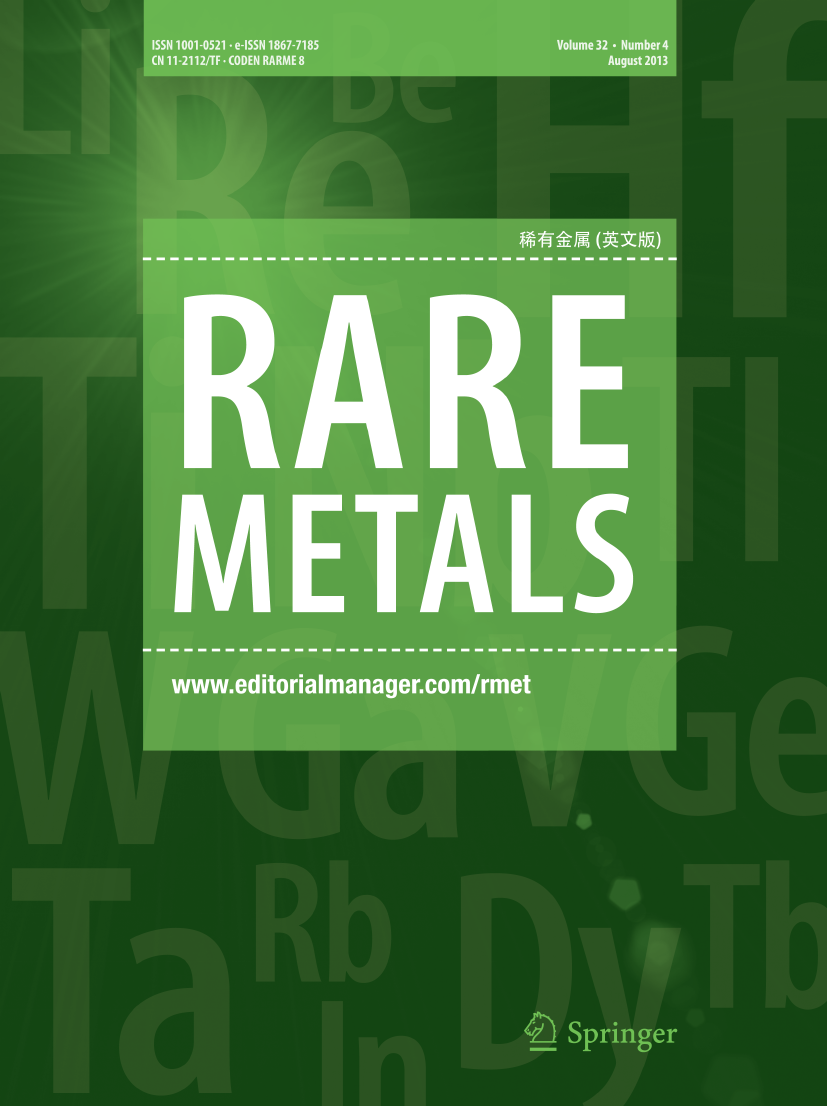摘要
作为合金型锂离子电极之一,Bi 具有大容量(3800 mAh-cm-3)和高电子电导率(1.4 × 107 S-m-1)的突出应用前景。然而,显著的体积膨胀(218%)和低相扩散率阻碍了其快速充电性能。为了克服这两个问题,本研究采用水热法和煅烧法在多壁铋微球上精心原位重构了掺杂 N 的碳纳米花涂层。纳米碳花大大增加了比表面积(40.0 m2-g-1),并缓解了体积膨胀(130%)。此外,掺杂 N 的纳米碳花的加入还使锂插入过程中 Bi 的锂吸附能逐渐增强,并提高了导电性。因此,在扫描速率为 0.8 mV-s-1 时,赝电容的贡献率达到了 87.5%,锂离子扩散系数(D_{text{Li}^{+}})的计算值在 10-10 到 10-12 cm2-s-1 之间。Bi@CNFs 阳极在 5C 时的比容量高达 2117.0 mAh-cm-3,循环 800 次后的容量保持率高达 93.2%。Bi@CNFs//LiFePO4 全电池在 100 次循环后也显示出 113.9 mAh-g-1 的稳定容量和 296.1 Wh-kg-1 的能量密度,库仑效率为 97.6%。通过弛豫时间分布分析和密度泛函理论计算,验证了快速充电储锂的机理。本文为制备合金型快充电极提供了一种提高伪电容和减小体积膨胀的新策略。As one of the alloy-type lithium-ion electrodes, Bi has outstanding application prospects for large volume capacity (3800 mAh·cm−3) and high electronic conductivity (1.4 × 107 S·m−1). However, the fast-charging performance is hindered by significant volume expansion (> 218%) and a low rate of phase diffusion. To overcome these two problems, an N-doped carbon nanoflower coating layer was elaborately in-situ reconstructed on a multiple-wall Bi microsphere by hydrothermal methods and subsequent calcination in this study. The carbon nanoflowers greatly increase specific surface area (40.0 m2·g−1) and alleviate the volume expansion (130%). In addition, the incorporation of N-doped carbon nanoflowers leads to a gradual enhancement in the Li adsorption energy of Bi during the process of lithium insertion and improves the electrical conductivity. Therefore, the contribution rate of pseudo-capacitance reached 87.5% at the scan rate of 0.8 mV·s−1, and the Li-ion diffusion coefficient (\(D_{\text{Li}^{+}}\)) was calculated in the range of 10−10 to 10−12 cm2·s−1. The Bi@CNFs anode provided a high specific volumetric capacity of 2117.0 mAh·cm−3 at 5C and a high capacity retention ratio of 93.2% after 800 cycles. The Bi@CNFs//LiFePO4 full cell also displayed a stable capacity of 113.9 mAh·g−1 and energy density of 296.1 Wh·kg−1 after 100 cycles with a Coulombic efficiency of 97.6%. The mechanism of fast-charging lithium storage was verified by distribution of relaxation time analysis and density functional theory calculation. This paper provides a new strategy to increase the pseudo-capacitance and reduce the volume expansion for the preparation of alloy-type fast-charging electrodes.
Graphical abstract

 求助内容:
求助内容: 应助结果提醒方式:
应助结果提醒方式:


